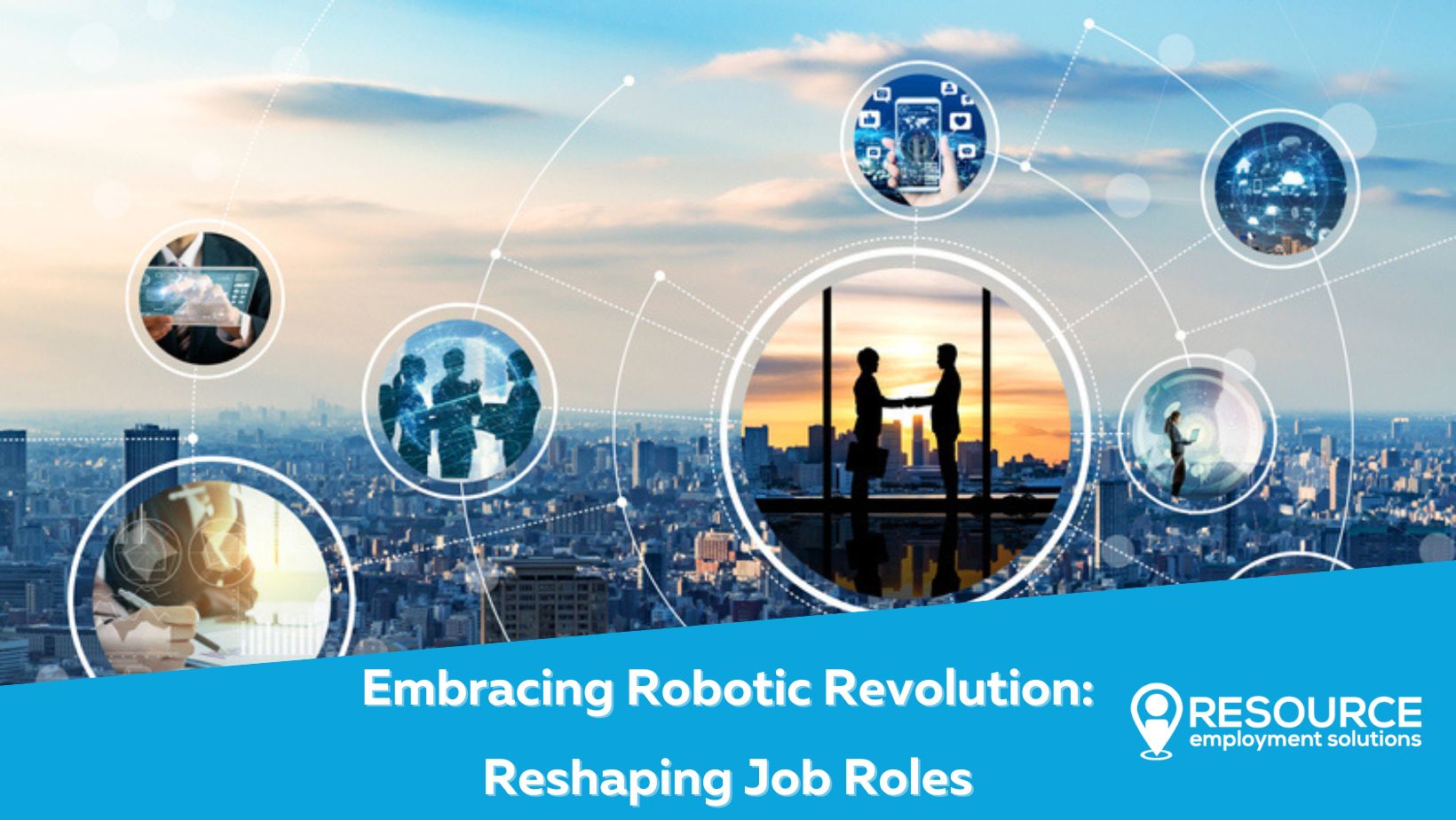Embracing Robotic Revolution: Reshaping Job Roles

Explore the transformative impact of robotics and automation on job roles in our blog. Discover how these advancements liberate humans from mundane tasks, enabling a focus on creativity and critical thinking. We delve into the collaborative synergy between humans and robots, enhancing productivity and job satisfaction. Additionally, learn how this shift necessitates a reevaluation of career trajectories, encouraging continuous learning and the emergence of new opportunities. The narrative unfolds as technology reshapes roles, amplifying human potential while fostering a symbiotic relationship with machines. Join us in exploring how the evolving landscape of work embraces innovation and collaboration to forge a future where humans and robots thrive together.
The emergence of robotics and automation is ushering in a transformative era in the workforce. As machines take on routine tasks, humans are poised to redefine their roles in a more profound and innovative way. This blog explores how the symbiotic relationship between humans and robots is reshaping job roles, leading to enhanced productivity, job satisfaction, and the cultivation of uniquely human skills.
Enhancing Human Potential
One of the most significant impacts of robotics and automation lies in their capacity to liberate humans from repetitive and mundane tasks. Routine activities that once consumed valuable time are now being delegated to machines, freeing up human workers to focus on activities that demand creativity, critical thinking, and emotional intelligence. This shift empowers individuals to harness their cognitive abilities and engage in tasks that require nuanced problem-solving, strategy formulation, and complex decision-making.
Collaborative Synergy
Rather than replacing human workers, robots are becoming valued collaborators. The synergy between humans and machines is fostering an environment of increased job satisfaction and productivity. Humans bring contextual understanding, intuition, and empathy, while robots contribute precision, efficiency, and data analysis. The integration of these strengths enhances overall performance and allows teams to tackle challenges with a multidimensional approach. This collaboration results in a work culture where employees are encouraged to innovate and amplify their skills, knowing that they have technological support.
Rethinking Career Trajectories
The evolution of job roles in the wake of automation is prompting individuals to rethink their career trajectories. The need for adaptable skill sets is driving a shift towards continuous learning and upskilling. As new tasks and responsibilities emerge alongside technological advancements, workers are embracing lifelong learning to remain relevant. Additionally, the rise of roles dedicated to robot programming, maintenance, and oversight showcases how technology is creating entirely new job opportunities that bridge human expertise with machine operations.
The rise of robotics and automation is not a narrative of job displacement; rather, it's a narrative of transformation and synergy. As robots take on routine tasks, human workers have the opportunity to delve into higher-value activities that nurture creativity, critical thinking, and emotional intelligence. This collaboration between humans and machines is ushering in a paradigm shift where job roles are redefined, productivity is amplified, and the workforce evolves into a tapestry of innovation. Embracing the dynamic relationship between humans and robots paves the way for a future where technology augments human potential, fosters job satisfaction, and propels industries towards uncharted horizons.
Connecting Top Employers And Top Talent
Sustainable, productive, and adaptable workforces are catalyzed when employers and talent connect across a spectrum of compatibility. Resource Employment Solutions prioritizes this compatibility to match the nation’s top employers, small and large, with the best people to get the job done. Find your employment solution with RES today.


